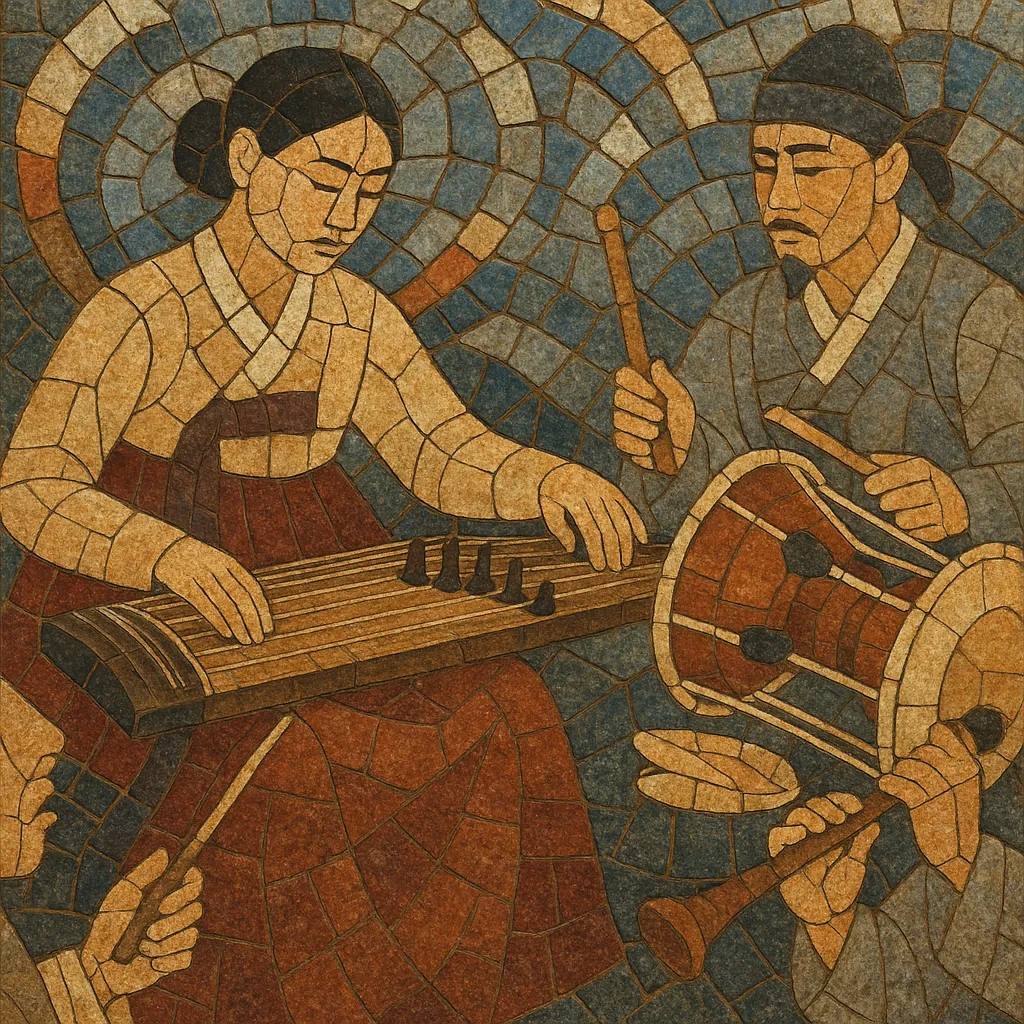Sanjo is a Korean instrumental solo genre characterized by a continuous suite of increasingly faster movements performed by a single melodic instrument with rhythmic accompaniment on the janggu (hourglass drum). It is best known through gayageum sanjo, but parallel traditions exist for geomungo, daegeum, haegeum, piri, and other instruments.
The music unfolds through set rhythmic cycles (jangdan) that accelerate from very slow to very fast, while the soloist spins ornate, semi-improvised variations on core motifs. Typical modes (jo) include pyeongjo and gyemyeonjo, and the performance relies on signature ornaments (sigimsae) such as slides, microtonal bends, and vibrato. Sanjo is deeply expressive—moving from introspective pathos to exhilarating virtuosity—and is a cornerstone of modern Korean traditional performance practice.
Sanjo emerged in the late Joseon period, crystallizing in the 1890s in the southwestern regions of Korea (notably Jeolla). It drew on shamanic ensemble practices (sinawi), the dramatic melodic rhetoric of pansori, folk dance tunes, and elements of court/elite traditions (jeongak), transforming these sources into a virtuosic instrumental solo idiom with janggu accompaniment.
Gayageum virtuoso Kim Chang-jo is widely credited with systematizing gayageum sanjo, establishing a model of a multi-movement suite that accelerates through canonical jangdan (e.g., jinyangjo → jungmori → jungjungmori → jajinmori → hwimori). Throughout the 20th century, masters developed distinct “schools” (ryu) for various instruments—gayageum (including the Jukpa lineage), geomungo (e.g., Han Gap-deok’s style), daegeum, haegeum, and others—preserving core frameworks while expanding repertoire and technique.
From the 1960s onward, renowned performers and composer-performers elevated sanjo onto concert stages, recorded definitive versions, and created pedagogical editions. Artists also experimented with orchestration and new compositional forms, feeding into the rise of fusion gugak and cross-genre collaborations. Today, sanjo remains a living tradition taught in conservatories, performed in formal recitals and informal settings, and adapted in world-fusion and contemporary projects while retaining its hallmark accelerative structure and ornamented improvisatory style.


